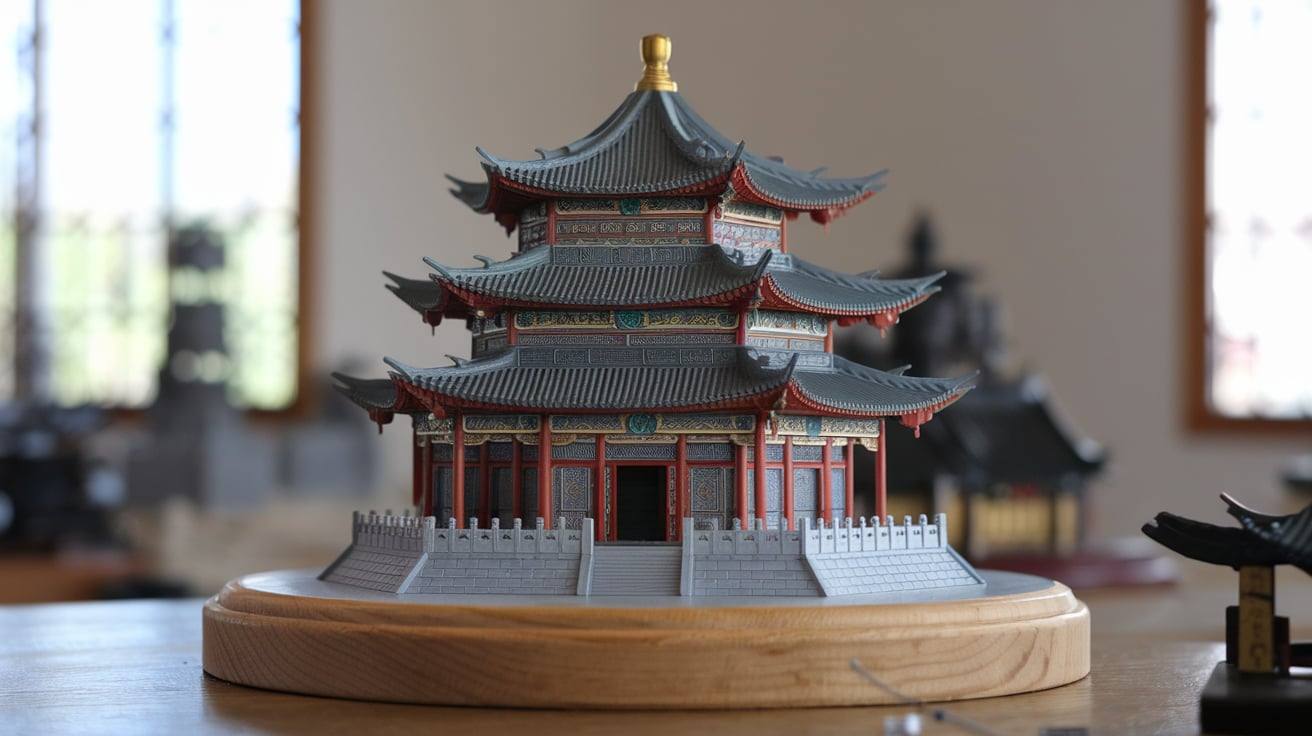
The Shaolin Temple 3D model front view is a modern tool for preserving one of the world’s most iconic cultural landmarks. Located in China’s Henan Province, the Shaolin Temple is renowned for its association with Chan Buddhism and martial arts. With the Shaolin Temple 3D model front view, technology helps bridge the past and present, allowing global audiences to explore this magnificent structure digitally.
What is a 3D Model Front View?
A 3D model is a digital recreation of a physical object. The Shaolin Temple 3D model front view captures the temple’s design from the front, offering a detailed perspective of its architecture, including stone carvings, gates, and roofs. This model enables users to explore the temple in ways impossible with traditional photographs.
Why is the Shaolin Temple 3D Model Important?
The Shaolin Temple 3D model front view is vital in preserving the temple’s history. With threats of natural wear, urban development, and other challenges, 3D modeling provides a way to safeguard the temple digitally. This model also allows global audiences to explore the Shaolin Temple, breaking down geographical barriers virtually.
Creating the Shaolin Temple 3D Model Front View
Creating the Shaolin Temple 3D model front view begins with collecting detailed measurements, photographs, and architectural plans. Skilled digital artists use 3D modeling software like Blender or Autodesk Maya to build the model, ensuring accuracy by referencing the original temple’s dimensions and features. Once the base model is complete, the Shaolin-Temple 3D model front view is refined with textures and lighting to create a lifelike appearance.
Virtual Reality and Immersive Experiences
By integrating the Shaolin Temple 3D model front view into virtual reality (VR), users can walk through the temple, interact with its features, and explore its surroundings in an immersive way. VR offers an engaging educational experience, especially for those unable to visit the temple in person.
Uses of the Shaolin Temple 3D Model
The Shaolin Temple 3D model front view is used in several fields:
Virtual Tourism: Users can explore the temple from anywhere, gaining insight into its cultural significance.
Education: Students and researchers study the temple’s architecture, history, and design techniques.
Preservation: The model serves as a digital record, aiding restoration efforts or damage assessment.
How the Shaolin Temple 3D Model Front View Aids Preservation
The Shaolin Temple 3D model front view is not just a virtual tour tool—it plays a crucial role in preserving the temple’s architecture. By digitally documenting the temple, the model can be used for restoration purposes if the temple ever needs repairs. In a disaster, the Shaolin-Temple 3D model front view can help architects and historians recreate the original design, ensuring the temple’s legacy endures.
The Role of Photogrammetry in the Shaolin Temple 3D Model Front View
Photogrammetry is a technique that creates 3D fashions from pics. The Shaolin Temple 3D model front view often incorporates photogrammetry to ensure precise details, such as the stone’s texture and the roof’s curvature. This technique enhances the accuracy and realism of the Shaolin-Temple 3D model front view, ensuring it faithfully represents the original structure.
Virtual Reality and the Shaolin Temple 3D Model Front View
When integrated into virtual reality (VR), the Shaolin Temple 3D model front view becomes an even more immersive experience. VR users can virtually walk around the temple, explore its courtyards, and view architectural details from every angle. The Shaolin Temple 3D model, with a front view in VR, enhances learning and allows users to feel as if they are visiting the temple.
Future of the Shaolin Temple 3D Model
The future of the Shaolin-Temple 3D model front view is bright, with emerging technologies like artificial intelligence and augmented reality offering ways to enhance the model. Future updates may include greater detail, improved interactivity, and expanded educational tools.
The Significance of Digital Preservation Through the Shaolin Temple 3D Model Front View
The Shaolin Temple 3D model front view highlights the importance of digital preservation in protecting cultural heritage. Physical structures like the Shaolin Temple are vulnerable to damage, but digital models can be preserved indefinitely. By utilizing the Shaolin-Temple 3D model front view, we ensure that future generations can appreciate the temple’s beauty and historical significance.
Accessibility of the Shaolin Temple 3D version Front View
One of the most significant benefits of the Shaolin Temple 3D model front view is its accessibility. Whether you’re an architecture student, a martial arts enthusiast, or someone interested in Chinese culture, the Shaolin-Temple 3D model front view provides an easy and free way to explore the temple from anywhere. This democratization of knowledge makes the Shaolin-Temple 3D model front view an invaluable resource for global audiences.
Preservation and Restoration with the Shaolin Temple 3D Model Front View
The Shaolin Temple 3D model front view also aids preservation and restoration efforts. Experts can use the model to plan restoration projects or assess damage without disrupting the temple by offering a detailed digital representation. The Shaolin-Temple 3D model front view sisa digital backup ensures the temple’s actual design is maintained even after repairs.
Cultural Exchange and the Shaolin Temple 3D Model Front View
The Shaolin Temple 3D model front view fosters cultural exchange by allowing people worldwide to experience the temple’s significance. It’s ideal for martial arts practitioners and those interested in Buddhism to explore the Shaolin Temple’s spiritual and physical aspects. The Shaolin-Temple 3D model front view facilitates a deeper understanding of Chinese culture, history, and philosophy.
How the Shaolin Temple 3D Model Front View Impacts Tourism
In addition to virtual tourism, the Shaolin Temple 3D model front view has also impacted physical tourism. Many visitors to China now use the model as a pre-trip exploration tool, familiarizing themselves with the temple before they go. This preparation enhances the overall experience and helps visitors appreciate the temple’s historical and cultural significance. Therefore, the Shaolin-Temple 3D model front view has become essential to the tourism experience.
The Role of the Shaolin Temple 3D Model in Cultural Preservation
The Shaolin Temple 3D model front view is a vital tool for cultural preservation. As physical structures age, a digital model ensures their legacy is preserved. This model can assess damage or help rebuild parts of the temple without physically altering the original structure.
Conclusion
The Shaolin Temple 3D model front view is a powerful digital tool that preserves and showcases one of the world’s most iconic cultural landmarks. Combining advanced technology with historical preservation allows people worldwide to experience the Shaolin Temple and learn about its significance in ways never before possible.
FAQs
1. What is the Shaolin Temple 3D model front view?
It is a digital representation of the Shaolin Temple, showing its front view with detailed architectural features.
2. How is the Shaolin Temple 3D model created?
To ensure accuracy, the model is created using 3D modeling software and photogrammetry techniques.
3. How can I explore the Shaolin Temple 3D model?
You can explore the model on virtual reality platforms or interactive websites.
4. Why is the Shaolin Temple 3D model important?
It helps preserve the temple digitally, making it accessible for research, restoration, and virtual tourism.
5. How does the Shaolin Temple 3D model aid in cultural preservation?
The model is a backup for the temple’s design, allowing it to be digitally preserved for future generations.


